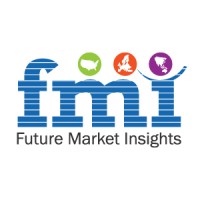FMI has projected the global mining lubricants sales to reach a value of US$ 3,960.18 million by 2034 end
Growing investments in Asia Pacific are likely to offset subdued growth in key markets, with the coal and iron ore mining sector driving demand. Future Market Insights, in its incisive study on the mining lubricants market, opines that the market is slated for 5.40% growth through the forecast period (2024 to 2034).
Manufacturers are working on product differentiation strategies to develop lubricants that have prolific anti-friction properties, high-pressure additives, and the correct anti-wear agents. Sharper profit margins are underpinned by lubricants used in equipment such as coal crawler excavators.
For mining companies, operational and maintenance costs account for a significant share. Increasing awareness among companies about the proper usage of lubricants has decreased the maintenance cost of equipment. Moreover, it has also helped companies to avoid unexpected shutdowns”, says an FMI analyst.
Intelligence Awaits! Request Your Sample Report Today! https://www.futuremarketinsights.com/reports/sample/rep-gb-6505
Key Takeaways of Mining Lubricants Market Study
- The mining lubricants market is slated to reach US$ 3,960.18 million by 2034
- High-performing lubricants and greases are growing in demand as COVID-19 tightens operating costs
- Oil-based lubricants are versatile and can be used for a wide range of mining equipment.
- Open pit mining is heightening the adoption of loaders, roof bolters, draglines, and haul trucks thus boosting demand for lubricants
- Bio-based lubricants are pipped as a long-term solution, but current market dynamics are in favor of synthetic variants
Mining Lubricants Market – Competition Landscape
Technological advancements in lubricants is acting as a catalyst for mining lubricants market players to move up the value chain. The mining lubricants marketplace remains moderately fragmented, with Shell, Exxonn Mobil and Chevron as the traditional triumvirate. With size of mining equipment undergoing a seismic shift, manufacturers are strategizing to come out with differentiated offerings that lower maintenance costs.
- Schaeffer, a privately held US company specializing in heavy duty lubricants, has demonstrated the capability of extending working time of mining equipment by several hours. Besides this, the company’s lubricants create a highly durable shield thus reducing metal-to-metal contact and friction
- Total, on the other hand, closely collaborates with its mining company clients, advising them on correct lubricant storage solutions. It recommends the first in, first out approach thus reducing costs on obsolete inventories by as much as 6% – 19%
- Exxon Mobil, in the year 2021, expanded its refinery in Singapore for better upgradation of Group II lubricants stock to remain competitive in the market
Want to Know More?
Future Market Insights has published a market research report on the Mining lubricants market that contains a global industry analysis for 2013 to 2023 and an opportunity assessment for 2024 to 2034. The report provides an insightful analysis of the Mining lubricants market through four different segments- product type, source, application, and region.
The Mining lubricants market report also provides demand trends of different types across industry verticals, a comprehensive list of service providers in the market, various projects around the world, along a detailed overview of the parent market.
Drive Your Business Growth Strategy: Purchase the Report for Key Insights! https://www.futuremarketinsights.com/checkout/6505
Mining Lubricants Market by Category
By Product Type:
- Oils
- Grease
By Source:
- Synthetic Lubricants
- Bio-based Lubricants
By Application:
- Coal Mining
- Bauxite Mining
- Iron Ore Mining
- Precious Metals & Rare Earth Minerals Mining
- Industrial Mineral Mining
- Others
By Region:
- North America
- Latin America
- Europe
- East Asia
- South Asia
- Oceania
- Middle East & Africa
About Future Market Insights (FMI)
Future Market Insights, Inc. (ESOMAR certified, recipient of the Stevie Award, and a member of the Greater New York Chamber of Commerce) offers profound insights into the driving factors that are boosting demand in the market. FMI stands as the leading global provider of market intelligence, advisory services, consulting, and events for the Packaging, Food and Beverage, Consumer Technology, Healthcare, Industrial, and Chemicals markets. With a vast team of over 400 analysts worldwide, FMI provides global, regional, and local expertise on diverse domains and industry trends across more than 110 countries.
Contact Us:
Nandini Singh Sawlani
Future Market Insights Inc.
Christiana Corporate, 200 Continental Drive,
Suite 401, Newark, Delaware – 19713, USA
T: +1-845-579-5705
For Sales Enquiries: sales@futuremarketinsights.com
Website: https://www.futuremarketinsights.com
LinkedIn| Twitter| Blogs | YouTube







